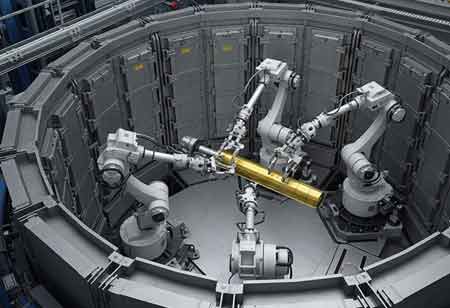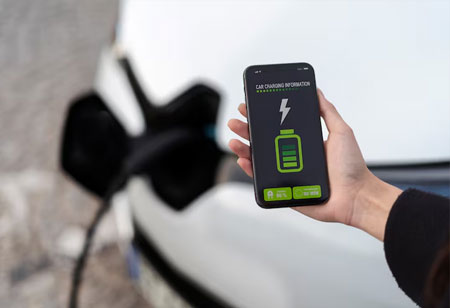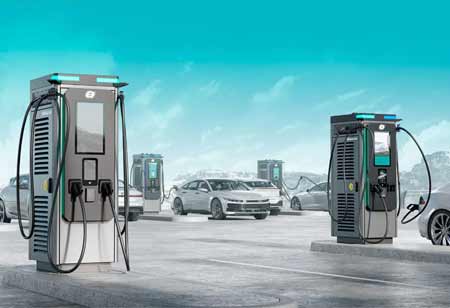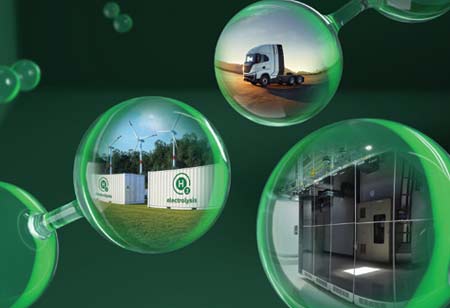CLOSE
Specials
I agree We use cookies on this website to enhance your user experience. By clicking any link on this page you are giving your consent for us to set cookies. More info
Be first to read the latest tech news, Industry Leader's Insights, and CIO interviews of medium and large enterprises exclusively from Energy Tech Review
Thank you for Subscribing
Reinventing Nuclear Containment and Remote Handling for the Next Era
The nuclear energy sector is evolving with advanced remote handling and containment technologies to enhance safety and efficiency while managing radioactive materials responsibly.

By
Energy Tech Review | Friday, November 28, 2025
Stay ahead of the industry with exclusive feature stories on the top companies, expert insights and the latest news delivered straight to your inbox. Subscribe today.
The nuclear energy sector, vital for a stable and decarbonized future, operates under stringent safety protocols, paramount among which is the management of radioactive materials. This necessitates sophisticated solutions for remote handling and containment, ensuring the protection of personnel and the environment. The industry is currently experiencing an evolution in these areas, driven by advancements in robotics, automation, and material science, all converging to redefine operational safety and efficiency within nuclear facilities.
Advancements in Remote Handling Technologies
At its core, nuclear remote handling containment revolves around the principle of "defense in depth," employing multiple layers of protection against radiological release. This begins with the design of the nuclear fuel itself, followed by its cladding, the reactor vessel, and ultimately, the robust containment structure. Within these layers, remote handling technologies play a crucial role, allowing operators to interact with highly radioactive materials and components from a safe distance, often behind substantial shielding.
The current landscape of remote handling technologies is diverse and continually advancing. Mechanical and electrical master-slave manipulators (MSMs) remain a cornerstone, offering dexterous control for intricate tasks. These systems, often bridge-mounted or gantry-mounted, are equipped with kinematically similar arms and force-reflecting feedback, providing operators with a tactile sense of the remote environment. The precision offered by advanced servo manipulators (ASMs) is particularly critical for delicate operations such as handling thermocouples or aligning impact wrenches within hot cells – shielded environments specifically designed for the manipulation of radioactive substances.
Beyond traditional manipulators, the industry is witnessing a significant shift towards more automated and intelligent systems. Gantry-mounted power manipulators (GMPMs), for instance, are electrically actuated systems designed for heavier remote handling operations and maintenance activities inside hot cells. These systems incorporate telescopic booms, hooks for lifting loads, and multi-axis articulated manipulator arms, all of which are controlled remotely. The design of such systems is planned, considering constraints like inter-cell wall openings and the need for remote maintenance and component replacement.
Remote viewing systems are indispensable for effective remote handling. While CCTV-based systems have traditionally been cost-effective and widely used, there's a growing emphasis on enhancing their longevity and reliability in harsh radiation environments. Innovative mechanisms are being developed to retract cameras into shielded environments when not in use, protecting their sensitive components from radiation damage. The integration of advanced sensors, including those for real-time radiation monitoring and 3D mapping, further enhances the operator's situational awareness, enabling more precise and safer operations.
Evolving Containment Strategies
The concept of containment itself is continually refined. Beyond the physical barriers of reinforced concrete and steel, which are designed to withstand significant internal pressures and external hazards, there's a focus on "functional containment" in advanced reactor designs. This approach emphasizes inherent and passive safety features that reduce the reliance on active systems or operator intervention to prevent radionuclide release. For example, some advanced designs incorporate coolants operating at or near atmospheric pressure, which inherently reduces the likelihood of coolant loss in the event of a breach. Similarly, advanced fuels with their containment functions, such as TRISO fuels, minimize the release of fission products even at the point of origin.
Modular construction is another significant trend impacting both reactor design and, consequently, remote handling and containment strategies. Small Modular Reactors (SMRs) are designed with a focus on factory fabrication of components, which can then be assembled on-site. This modularity not only expedites construction but also presents opportunities for standardized remote handling procedures and pre-tested containment modules, potentially leading to increased safety and efficiency.
Digital Integration and Future Outlook
The integration of advanced digital technologies is proving transformative for remote handling and containment. Artificial intelligence (AI) and machine learning are being explored for optimizing nuclear threat detection, enhancing the efficiency of remote operations, and improving predictive maintenance for remote handling equipment. Digital twins, which are virtual replicas of physical systems, enable engineers to simulate and test reactor operations and remote handling scenarios in a risk-free virtual environment, significantly improving training and operational readiness. Cybersecurity is also becoming increasingly critical, as it ensures the integrity and reliability of these interconnected digital systems.
The industry is seeing an increased application of robotics and remote systems in the nuclear back-end, particularly in radioactive waste management and decommissioning. These highly hazardous environments demand autonomous and semi-autonomous solutions to minimize human exposure. Innovations in this area include automated material handling systems within containment structures, designed for modularity, ease of remote maintenance, and standardization. These systems are crucial for the efficient and safe movement of radioactive waste for processing, packaging, and long-term storage or disposal.
Nuclear remote handling and containment, driven by the imperative of safety, coupled with the pursuit of enhanced efficiency and cost-effectiveness, has put the industry on a trajectory towards a future where nuclear energy is safer and more efficient than ever before. The ongoing development of advanced reactor designs, including SMRs and microreactors, will necessitate new approaches to remote operation and integrated containment. The emphasis will remain on creating systems that are inherently safer, more resilient, and capable of operating with minimal human presence in hazardous zones. The synergistic integration of advanced robotics and sophisticated sensor technologies within robust containment structures is setting the stage for a new era of nuclear energy, where human intervention in high-radiation environments is increasingly a matter of remote precision and intelligent automation.

Copyright © 2025 Energy Tech Review. All rights reserved






